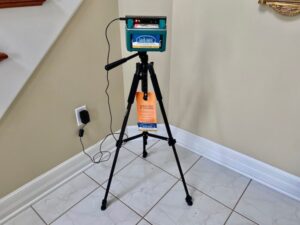
Pre-listing home inspections are an essential step for homeowners looking to sell their property effectively and confidently. These inspections not only provide a thorough evaluation of the home’s condition but also help sellers understand the potential issues that could arise during the buyer’s inspection process. By addressing these concerns upfront, sellers can improve their home’s marketability and potentially enhance its value.
In an ever-competitive real estate market, being proactive by opting for a pre-listing inspection can offer significant advantages, from identifying costly repairs to presenting a more transparent image to prospective buyers. This approach can set the stage for smoother transactions and ultimately lead to a more favorable selling experience.
Importance of Pre-listing Home Inspections

Conducting a pre-listing home inspection can be a game changer for sellers in today’s competitive real estate market. This proactive approach not only enhances a home’s marketability but also builds trust with potential buyers. A thorough inspection reveals the property’s condition, allowing sellers to address issues before potential buyers discover them, ultimately facilitating a smoother transaction process.Pre-listing inspections can greatly influence home valuation and buyer perception.
By identifying and rectifying problems in advance, sellers can justify their asking price and potentially increase it through necessary repairs or improvements. A well-maintained property is more attractive to buyers, often leading to quicker sales and fewer negotiations.
Benefits of Conducting Pre-listing Inspections
A pre-listing inspection can uncover various issues that might deter potential buyers. Addressing these concerns before listing a home can significantly simplify the selling process. Some key benefits include:
- Increased Buyer Confidence: A property with a clean bill of health from an inspection report provides buyers with peace of mind, ensuring they are making a sound investment.
- Enhanced Negotiation Power: By being proactive, sellers can price their home more confidently and resist lowball offers by demonstrating transparency about the property’s condition.
- Time and Cost Efficiency: Identifying issues early can save sellers time and money by preventing costly repairs that could arise during buyer inspections.
- Opportunity for Repairs: Sellers can choose to make repairs at their convenience, rather than being rushed into last-minute fixes during the selling process.
- Reduction of Closing Delays: By providing potential buyers with a pre-inspection report, sellers can streamline the closing process and avoid unexpected delays.
Identifying Potential Issues Before Listing
Pre-listing home inspections help sellers identify potential issues that could arise during the sales process. Common concerns that inspections can reveal include:
- Structural Problems: Issues such as foundation cracks or roof damage can significantly impact a home’s value and are best addressed before listing.
- Electrical and Plumbing Concerns: Outdated wiring or leaky pipes can deter buyers; fixing these beforehand can boost buyer interest and confidence.
- Pest Infestations: Discovering termite or rodent problems early allows sellers to take corrective measures, preventing buyer fallout from these issues.
- HVAC System Condition: An inspection can uncover inefficiencies or needed repairs in heating and cooling systems, which can be a red flag for buyers.
- Cosmetic Issues: While not structural, cosmetic flaws can impact first impressions; addressing them can enhance the overall appeal of the home.
“A well-prepared home not only attracts buyers but often leads to higher offers and quicker sales.”
Common Issues Found in Pre-listing Inspections

Pre-listing home inspections often reveal various issues that can significantly influence a property’s marketability and value. By addressing these problems before listing a home for sale, sellers can enhance their chances of closing a deal quickly and at a satisfactory price. Let’s explore some of the typical issues that inspectors commonly encounter during these evaluations.
Typical Problems Discovered
Many homes, regardless of age, can exhibit a range of issues that should be addressed prior to listing. Recognizing these potential pitfalls can save sellers from unexpected surprises during the negotiation process. Some common issues identified in pre-listing inspections include:
- Roofing problems such as missing shingles, leaks, or structural damage.
- Water damage or mold growth, particularly in basements or attics.
- Foundation cracks or settling that may indicate structural concerns.
- Pest infestations, including termites or rodents, which can compromise the integrity of a home.
- Heating and cooling system inefficiencies or failures.
- Decaying wood on decks or porches that could pose safety hazards.
- Windows and doors that are not sealing properly, leading to energy loss.
Addressing these issues not only improves the home’s appeal but also minimizes the risk of negotiations falling through due to unforeseen complications.
Significance of Addressing Plumbing Issues
Plumbing problems often surface during pre-listing inspections and can have significant implications for both the seller and potential buyers. Issues such as leaks, clogs, or outdated systems can lead to water damage, mold, and more serious structural issues if left unresolved.For example, a leaking pipe in a bathroom may seem minor at first; however, it can cause extensive water damage over time, leading to costly repairs.
Buyers are likely to be deterred by the prospect of inheriting plumbing issues, which can cause property value to drop. A seller taking the initiative to repair plumbing problems before listing can not only enhance the home’s value but also instill confidence in potential buyers.
Examples of Electrical Problems
Electrical issues are another common discovery during pre-listing inspections that can raise red flags for buyers. Several examples of electrical problems include:
- Outdated wiring systems that may not meet current safety standards.
- Overloaded circuits that pose fire hazards.
- Inadequate grounding, increasing the risk of electrical shock.
- Improperly installed fixtures or outlets, which can lead to malfunctions.
The implications of these electrical problems can be severe. Not only do they pose safety risks, but they can also lead to increased insurance premiums or even affect the ability to secure financing for the home. By addressing electrical issues early in the selling process, homeowners can demonstrate that the property is safe and well-maintained, making it more attractive to buyers.
The Process of Conducting a Pre-listing Home Inspection
Preparing for a pre-listing home inspection is essential for homeowners looking to sell their property. This process not only helps in identifying potential issues but also enables sellers to address them proactively, making the home more appealing to prospective buyers. Understanding the steps involved can streamline this process, ensuring a smooth inspection experience.The first step in preparing for a home inspection involves selecting a qualified home inspector.
It is crucial to choose someone who is licensed, experienced, and has good reviews. Once an inspector is selected, homeowners can begin organizing their property to facilitate the inspection process. This includes ensuring that all areas of the home are accessible, as well as addressing minor repairs that could be flagged during the inspection.
Checklist for Homeowners Prior to an Inspection
Creating a checklist can help streamline the preparation process for a pre-listing home inspection. This checklist should include the following items:
- Clear access to all areas: Ensure that attics, basements, and crawl spaces are free of clutter.
- Light bulbs: Replace any burnt-out bulbs to ensure all areas are well-lit during the inspection.
- Documentation: Gather important documents like maintenance records, warranties, and repair receipts.
- Repairs: Fix obvious issues such as leaky faucets, squeaky doors, or chipped paint.
- Utilities: Ensure that all utilities (water, gas, electricity) are turned on and functioning.
- Exterior maintenance: Trim shrubs, mow the lawn, and remove debris from gutters and downspouts.
This checklist serves as a guide to help ensure that the home is in the best possible condition before the inspection, potentially avoiding surprises later in the sale process.
Key Areas for Inspector Focus During Assessment
Home inspectors typically focus on several key areas during their assessment. Understanding these can help homeowners prioritize their preparations. The main areas of inspection include:
- Roof: Inspecting for any signs of damage, leaks, or missing shingles.
- Foundation: Checking for cracks, settling, or signs of water intrusion.
- Plumbing: Looking for leaks, water pressure issues, and the condition of pipes.
- Electrical systems: Assessing wiring, outlets, and the overall safety of the electrical system.
- HVAC systems: Ensuring that heating and cooling systems are functioning properly and efficiently.
- Interior condition: Evaluating walls, ceilings, floors, and the overall cleanliness of the home.
Being aware of these focus areas can help homeowners take proactive measures to address any issues before the inspection, ultimately leading to a more favorable outcome in the selling process.
Proactive preparation can significantly enhance the appeal of a home and streamline the selling process.
Cost Considerations for Pre-listing Inspections
Investing in a pre-listing home inspection can seem daunting due to associated costs, but understanding these expenses can provide significant value in the long run. Homeowners need to weigh the costs of inspections against potential repair expenses that may arise during buyer negotiations. This analysis can ultimately lead to better decision-making and a smoother home-selling process.The cost of pre-listing inspections generally ranges from $300 to $600, depending on various factors such as location, property size, and the complexity of the inspection.
This upfront investment can uncover critical issues before they become negotiation points with prospective buyers, potentially saving sellers thousands in last-minute repairs or price reductions.
Comparison of Pre-listing Inspection Costs and Repair Costs
When considering the costs of a pre-listing inspection, it is essential to understand how these expenses compare to potential repair costs that may arise during negotiations.
- A pre-listing inspection allows sellers to identify and address issues proactively. For instance, a roof leak discovered during a buyer’s inspection could cost anywhere from $1,000 to $5,000 to repair, depending on severity and location.
- In contrast, addressing similar issues before listing can often be done at a significantly lower cost, especially if caught early. For example, repairing minor roof damage may only run between $300 and $1,200.
- Additionally, homes with significant undisclosed issues can lead to price drops of $10,000 or more during negotiations, increasing the financial risk for sellers.
Regional Variations in Inspection Costs
The costs associated with pre-listing inspections can vary significantly based on geographical location and property specifics.
- Urban areas typically see higher inspection fees due to increased demand and a higher cost of living. For instance, inspections in major cities may start at $600, while smaller towns might offer rates starting at $300.
- Property size also plays a crucial role in inspection costs. Larger homes usually incur higher fees due to the more extensive inspection required. For example, a three-bedroom home might cost around $400, whereas a five-bedroom property could easily rise to $800.
- It’s important for homeowners to research local inspection services to get a better understanding of typical costs in their area, as this can inform their budgeting process.
Budgeting for Pre-listing Inspections
Proper budgeting is essential when planning for a pre-listing inspection. Homeowners can follow these tips to ensure they are financially prepared:
- Allocate funds specifically for the inspection and any anticipated repairs. A good rule of thumb is to set aside 1% to 2% of your home’s value for overall pre-listing expenses. For a $300,000 home, this would mean budgeting $3,000 to $6,000.
- Research and interview multiple inspection companies to find one that fits your budget while still providing quality service. Request quotes and inquire about any additional costs that may arise during the inspection process.
- Consider creating a contingency fund for unexpected issues that may arise during the inspection or after listing. This fund can alleviate stress and help ensure a smoother sale process.
Home Furniture Considerations During Inspections
Staging a home with furniture is an essential aspect of the pre-listing process that can significantly impact how potential buyers perceive the property. The arrangement, style, and condition of the furniture can create a lasting impression, often influencing the perceived value of the home. Understanding the nuances of furniture staging can not only enhance the visual appeal of the space but also facilitate a smoother inspection process.
Impact of Staging on Inspection Process
The way a home is staged with furniture plays a critical role during inspections. Properly staged homes can highlight desirable features, allowing inspectors and potential buyers to focus on the property’s strengths rather than its flaws. When staging, it is essential to create a flow that guides viewers through the space, making it feel larger and more inviting. Moreover, a well-furnished home can mask minor imperfections, making them less noticeable during an inspection.
For instance, strategically placed furniture can effectively draw attention away from areas that may need repairs, thus enhancing the overall presentation of the property.
Effects of Furniture Placement on Perceived Value
Furniture placement not only affects the aesthetics of the home but also its perceived value. Thoughtful arrangements can create a sense of balance and proportion, making spaces appear more functional and inviting. Buyers are more likely to envision themselves living in a well-staged home, often leading to higher offers. To ensure optimal placement, consider the following:
- Highlight Key Areas: Arrange furniture to emphasize focal points such as fireplaces or large windows.
- Define Spaces: Use furniture to delineate different areas in open floor plans, helping buyers understand how the space can be utilized.
- Maintain Flow: Ensure pathways remain clear and logical, allowing easy movement from one area to another.
Selecting Complementary Furniture
Choosing the right furniture that complements the home’s features can enhance its appeal during showings. The goal is to create a cohesive look that resonates with potential buyers while also allowing the home’s inherent qualities to shine.When selecting furniture, keep the following considerations in mind:
- Style Compatibility: Match furniture styles to the home’s architecture—traditional homes may benefit from classic furnishings, while modern homes may require sleek, minimalist pieces.
- Scale and Size: Choose furniture that fits the space appropriately; oversized pieces can overwhelm a small room, whereas too-small items may make a large space feel sparse.
- Color Coordination: Select colors that enhance the home’s palette, contributing to a harmonious look that feels inviting.
Proper staging and furniture selection can significantly enhance the perceived value of a home, influencing buyers’ emotional responses during inspections.
Integrating Green Living Principles in Home Inspections
As awareness of environmental issues continues to rise, integrating green living principles into home inspections has become increasingly important. Evaluating a home’s energy efficiency is not only beneficial for the environment but also adds value to the property and attracts eco-conscious buyers. This section will discuss how to assess energy efficiency during inspections, highlight the benefits of green living features, and provide examples of eco-friendly upgrades that can be identified.
Evaluating a Home’s Energy Efficiency
When assessing a home’s energy efficiency during a pre-listing inspection, several key elements should be evaluated. These aspects are crucial for understanding the home’s sustainability and operational costs. Here are important factors to consider:
- Insulation Quality: Inspect the type and condition of insulation in the attic, walls, and floors to determine if it meets current energy standards.
- Windows and Doors: Check for double or triple glazing, seals, and overall efficiency. Energy-efficient windows reduce heat loss and improve comfort.
- HVAC Systems: Evaluate the efficiency rating of heating, ventilation, and air conditioning systems. Look for Energy Star-rated appliances which consume less energy.
- Appliances: Identify energy-efficient appliances that contribute to lower utility bills and a smaller carbon footprint.
- Lighting: Examine the types of light fixtures in the home, noting the installation of LED bulbs which use significantly less electricity compared to traditional incandescent bulbs.
Highlighting these features during the inspection can provide potential buyers with valuable insights into the home’s energy performance and long-term cost savings.
Benefits of Highlighting Green Living Features
Showcasing green living features during a home listing can significantly enhance the property’s appeal. Buyers are increasingly prioritizing sustainability, and emphasizing eco-friendly attributes can lead to higher interest and sale prices. The benefits include:
- Increased Marketability: Homes with green features can differentiate themselves in a competitive market, attracting environmentally-conscious buyers.
- Potential Energy Savings: By emphasizing energy-efficient systems and upgrades, sellers can illustrate the potential for reduced utility bills, making the home more financially attractive.
- Improved Indoor Air Quality: Highlighting features such as proper ventilation, non-toxic materials, and energy-efficient appliances can reassure buyers of a healthier living environment.
- Tax Incentives: Potential buyers may be interested in available tax credits or rebates for purchasing energy-efficient homes, which can further enhance the appeal.
As buyers become more knowledgeable about the benefits of green living, presenting these features can lead to a successful sale.
Examples of Eco-Friendly Upgrades
During pre-listing inspections, several eco-friendly upgrades can be identified, showcasing the home’s commitment to sustainability. Here are notable examples:
- Solar Panels: Inspect for the installation of solar energy systems that reduce reliance on traditional energy sources.
- Rainwater Harvesting Systems: Look for systems that collect rainwater for irrigation, reducing water usage and costs.
- Energy-Efficient Landscaping: Assess the use of native plants and xeriscaping techniques that require less water and maintenance.
- Smart Home Technology: Identify smart thermostats and energy management systems that optimize energy use and enhance efficiency.
- Recycled Building Materials: Check for the use of recycled or sustainable materials in construction and renovations, promoting eco-friendliness.
By identifying these upgrades, sellers can effectively market their homes to a growing demographic of environmentally-conscious buyers who prioritize sustainability in their purchasing decisions.
Heating and Air Conditioning System Assessment
Before putting a home on the market, an assessment of the heating, ventilation, and air conditioning (HVAC) system is crucial. This evaluation not only enhances the appeal of the property but also ensures that potential buyers are aware of the home’s condition in this critical area. An efficient HVAC system plays a significant role in the overall comfort of a home and can influence buying decisions.Inspecting HVAC systems as part of a pre-listing inspection helps identify any current or potential issues that could deter buyers.
A well-functioning heating and cooling system is a major selling point, while any deficiencies can raise red flags. Buyers often have concerns about the efficiency, age, and maintenance history of HVAC systems, making it essential for sellers to address these areas proactively.
Common Issues Found in Heating and Cooling Systems
Numerous issues can surface during an HVAC inspection. Identifying these problems prior to listing can save sellers from potential negotiations or price reductions later. Here are some common concerns:
- Insufficient Heating or Cooling: Inefficient temperature regulation often indicates issues with the system’s components, such as the thermostat or ductwork.
- Air Leaks: Leaky ducts can lead to significant energy loss, affecting comfort and increasing utility bills.
- Dirty Filters: Clogged air filters can restrict airflow, leading to system strain and decreased efficiency.
- Age of the System: Older systems may be less efficient and more prone to breakdowns, which can be a turn-off for buyers.
- Strange Noises: Unusual sounds during operation can signal mechanical problems or worn-out parts that require immediate attention.
In addressing these issues during a pre-listing inspection, sellers can create a more attractive proposition for buyers, potentially boosting both interest and sale price.
Maintenance Tips for Homeowners
Preparing an HVAC system for inspection involves several maintenance steps that homeowners can take to ensure their systems are functioning optimally. Regular upkeep can prevent issues and extend the lifespan of the system:
- Change Filters Regularly: Filters should be checked and replaced every 1-3 months to maintain airflow and efficiency.
- Schedule Professional Maintenance: An annual check-up by a certified technician can identify and rectify minor issues before they escalate.
- Clear Surrounding Areas: Ensure that outdoor units are free of debris, plants, and other obstructions to promote good airflow.
- Inspect Ductwork: Check for visible signs of wear, leaks, or blockages within the duct system to enhance efficiency.
- Test Thermostat Functionality: Ensure that the thermostat is calibrated correctly and functioning efficiently to regulate temperature effectively.
By proactively maintaining their HVAC systems, homeowners can not only improve the home’s marketability but also enhance the living experience for prospective buyers, making the property a desirable choice in the real estate market.
Understanding Home Inspection Reports
Reading a home inspection report can seem like a daunting task, but it’s an essential step in the home buying or selling process. A home inspection report Artikels the condition of the property and highlights any issues that may need addressing, helping both buyers and sellers make informed decisions. Understanding how to interpret these reports can significantly impact the negotiation process and ultimately the sale.Interpreting a home inspection report requires a careful analysis of its various sections, which typically include categories for structural, mechanical, and safety-related concerns.
Reports often use standardized formats with descriptive headings, allowing readers to easily locate specific information. Most inspection reports contain summaries of findings along with detailed descriptions of each issue, often accompanied by photographs. This visual evidence can be particularly helpful in illustrating the severity and context of problems.
Reading the Report
To effectively read and interpret a home inspection report, consider the following key aspects:
- Summary Section: Most reports start with a summary that highlights major concerns. This section is crucial because it gives a quick overview of the property’s condition.
- Detailed Findings: Following the summary, the report dives into specifics. This section describes each issue along with its location and potential implications, often categorized by systems such as plumbing, electrical, and roofing.
- Recommendations: Inspectors often include recommendations for repairs or further evaluation by specialists. Understanding these suggestions can guide subsequent actions.
- Photographic Evidence: Photos included in the report can provide visual context to the findings. They help illustrate specific issues and are useful for discussions during negotiations.
Importance of Transparency with Buyers
Transparency regarding inspection findings is vital for fostering trust in real estate transactions. Disclosing issues found in the inspection report can lead to smoother negotiations and prevent potential legal disputes down the line. It’s in the best interest of sellers to communicate openly about any significant findings, as this openness can enhance their credibility.Providing buyers with a complete picture of the home allows them to make informed decisions, whether they choose to proceed with the purchase, request repairs, or negotiate a lower price.
Comparison of Inspection Report Formats
Inspection reports can vary widely in format and effectiveness. Here are some common formats:
- Narrative Reports: These reports offer detailed descriptions in paragraph form. While they can provide thorough insights, they may be less structured and harder to navigate for quick references.
- Checklists: A checklist format offers a concise overview of the property’s condition, making it easy to identify issues at a glance. However, they may lack detailed explanations.
- Digital Reports: Increasingly, inspectors provide digital reports with interactive elements and embedded photographs. These formats can enhance understanding and engagement, making it easier for buyers and sellers to visualize issues.
Ultimately, the effectiveness of an inspection report depends on clarity, organization, and the quality of information provided. A well-structured report can empower both buyers and sellers, facilitating a smoother transaction process.
House Plans and Their Relationship to Inspections
The design and layout of a house play a crucial role in the home inspection process. Well-structured house plans not only enhance the aesthetic appeal but also contribute significantly to the functionality and safety of a home. Understanding how these plans interact with the inspection process can pave the way for smoother transactions and fewer surprises during the sale of a property.House plans are the blueprint of any home, dictating how spaces are structured and how systems are integrated.
A well-designed plan can facilitate an inspection by ensuring that all systems, such as plumbing and electrical, are easily accessible and compliant with local codes. A home built according to sound architectural practices exhibits fewer flaws, minimizes risks, and is more likely to pass inspections with flying colors.
Code Compliance and Its Importance
Code compliance refers to adhering to local building regulations that govern construction practices. These codes ensure that homes are built safely and sustainably, which is critical during inspections. When a house plan incorporates these codes, it signifies a commitment to quality and safety, which inspectors will always evaluate.The following factors highlight the importance of code compliance in the inspection process:
- Safety Assurance: Adhering to building codes minimizes hazards associated with structural failures and improves overall safety for occupants.
- Property Value: Homes built to code are more likely to maintain their market value, as compliance indicates reliability to potential buyers.
- Insurance Benefits: Properties that meet local codes can qualify for better insurance rates and coverage, making them more appealing investments.
- Less Red Tape: Compliance reduces the likelihood of red flags during inspections, facilitating a smoother sale process.
Architectural Features and Potential Inspection Outcomes
The architectural features of a home can significantly influence the outcomes of inspections. Elements such as roof design, foundation type, and materials used can either enhance the property’s resilience or expose it to potential issues. For instance, a well-designed roof can shed water efficiently, preventing water damage and mold growth. Conversely, poorly executed designs may lead to structural weaknesses that inspectors will flag.Some architectural features that commonly affect inspection outcomes include:
- Roof Design: Steeper roofs are less prone to water pooling, while flat roofs might require more maintenance and increase the risk of leaks.
- Foundation Type: A solid foundation prevents settling and cracking over time, ensuring structural integrity, while weak foundations can be a red flag during inspections.
- Building Materials: The use of high-quality, energy-efficient materials not only boosts aesthetic appeal but also improves performance, resonating positively during evaluations.
- Ventilation Systems: Properly designed ventilation in attics and basements can prevent moisture buildup, which is often a concern for inspectors looking for signs of mold and decay.
“Well-planned homes that prioritize code compliance and structural integrity are more likely to pass inspections with ease, paving the way for successful transactions.”
Closing Summary
In summary, pre-listing home inspections are a strategic investment for any seller aiming to maximize their home’s value and appeal. By revealing hidden issues and providing the opportunity to make necessary repairs, sellers can not only enhance buyer confidence but also streamline the negotiation process. Embracing this proactive approach can lead to a more rewarding and less stressful selling journey.
Frequently Asked Questions
What is a pre-listing home inspection?
A pre-listing home inspection is an evaluation conducted before a home is listed for sale, allowing owners to identify and address issues that may affect its marketability.
How long does a pre-listing home inspection take?
The duration of a pre-listing home inspection typically ranges from 2 to 4 hours, depending on the size and condition of the home.
Who pays for the pre-listing inspection?
The seller usually covers the cost of a pre-listing inspection, viewing it as an investment in the sale process.
Can I be present during the inspection?
Yes, sellers are generally encouraged to be present during the inspection to ask questions and gain firsthand insight into their property’s condition.
Will a pre-listing inspection guarantee a sale?
While it does not guarantee a sale, a pre-listing inspection can significantly enhance buyer confidence and potentially lead to a smoother transaction.





